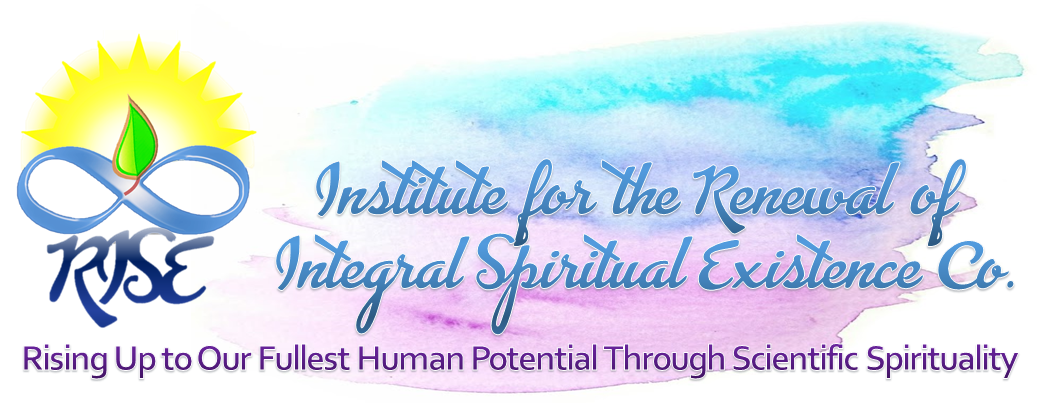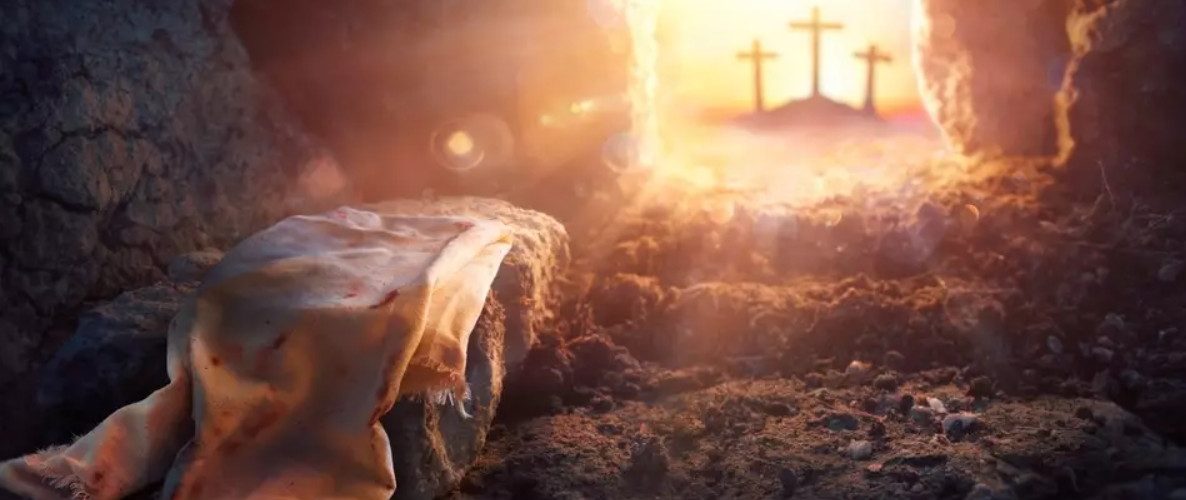The Resurrection of Christ is of central importance to Christianity. Without the Resurrection, the death of Christ is totally without meaning. Even worse, the words of Christ are fake news, plain bragging, empty exclamations.
This is why the debate around the reality of the Resurrection has been raging for centuries. The outcome of this debate would affect the lives of billions who believe in the truth of Christianity.
Fortunately, in this time of global chaos and increasing attacks on anything spiritual, unassailable solid evidence for the reality of the Resurrection has now been offered. This is an epochal development in humanity’s cultural and spiritual life.
Enter Gary Habermas
Dr. Gary Habermas is probably the most important researcher in the scholarly field of the Resurrection. He started as a skeptic, doubting whether the Resurrection actually happened.
But after more than 32,000 hours and 50 years of research on this topic, he has become a global go-to authority on the reality of the Resurrection. In the global battle of hearts and minds on the Resurrection topic, he has emerged as the clear winner, as one who has provided the most compelling evidence of the Resurrection. (See the references below for more on the work of Dr. Habermas.)
Before we examine in detail the solid evidence that he presents for the Resurrection, let us take a look at his own description of his work on a website dedicated to his work.
“Gary Habermas has dedicated his professional life to the examination of the relevant historical, philosophical, and theological issues surrounding the death and resurrection of Jesus. His extensive list of publications and debates provides a thorough account of the current state of the issue. Christian believers as well as unbelievers may find within the contents of this site a strong argument for the philosophical possibility of miracles and the historicity of the resurrection of Jesus, as well as the theological and practical implications of this event.” https://garyhabermas.com/
Overwhelming Evidence for the Reality of the Resurrection
Habermas presents six reasons supporting the reality of the Resurrection. These six reasons may not seem “overwhelming”. But one needs to realize that these reasons are supported by dozens of other supporting evidences.
Here are the six.
1. James, the brother of Christ, was not a believer of Christ. James distanced himself from Christ because some of his neighbors believed that Christ was mentally ill, making all kinds of outrageous claims about his divinity and teachings. Christ was an embarrassment as far as James was concerned. He distanced himself from Christ. He was not even with his mother, Mary, during the Crucifixion of Christ. Yet, after the Resurrection, James experienced firsthand the Risen Christ and became a believer in the Resurrection of his Brother. Here we have an early eyewitness account for the reality of the Resurrection.
2. Shortly after the Resurrection, the 12 disciples (and later on, an increasing number of other disciples) experienced the Risen Christ. One source of first-hand evidence will be discussed shortly below in Galatians 1 and 2, part of the letters Paul sent to the community of Christian believers.
3. This third piece of evidence refers to the so-called, “Monologia“. It is a Greek word referring to the unity of doctrine of all the different followers of Christ immediately after the death of the latter. The Monologia of the early Christians was consistent and uniform. It emphasized the Deity, Death and Resurrection (DDR) of Christ.
4. The fourth piece of evidence were the creeds of the early Christians. They give a sense of what the early Christians believed only two or three years after the Resurrection. They were created soon after the Resurrection. These creeds contained the affirmation of the Resurrection among early Christians. These creeds were easily memoizable statements about Christ. They were perfect instruments designed for the mostly illiterate people in the early Christian period. (For more details on this important evidence of the Resurrection, see the essay by Dr. Bob Martin III, “Early Christian Creeds: 8 Points Proving the Resurrection!” at https://binmin.org/early-christian-creeds/.
5. We must not forget the powerful conversion of Saul into Paul. Before his conversion, Saul was the notorious persecutor of Christians. His condemnation often resulted in the death of early Christians. He was on his way to Damascus to persecute more Christians when the impossible happened. He had a direct experience of the Risen Christ Who asked him (Saul) why he was persecuting Christ. Saul was blinded by the experience for three days. He gained his sight and become Paul, considered one of the most important founders of Christianity. Paul thus become one of the early eyewitnesses of the Resurrection of Christ.
6. Finally, Paul had two meetings in Jerusalem with Peter and James, the brother of Christ. In the second meeting, John the Evangelist and Apostle was with them. Paul wanted to compare his experience with these other early eyewitness of the Risen Christ. He spent 15 days with them. Paul said, in Galatians 2:9, that the others added nothing to him. In short, all of them had the same deeply held experiences, beliefs and teachings. And the core of these was the Deity, Death and Resurrection of Christ.
There is other powerful supporting evidence for these six. But they are more than enough for those who are truly open to be convinced of the Resurrection of Christ.
Habermas emphasizes that, as historical evidence, the above are far superior to the evidence being marshalled for the existence of Alexander the Great and Buddha. The earliest report on Alexander the Great is 300 years after the existence of the latter. For Buddha, writings about him and his teachings started 800 years after the death of the Buddha. For Christ, the evidence presented above was immediately after the Resurrection and up to within 6 years after the Resurrection.
In short, the evidence is super strong that Christ resurrected. By overcoming Death, while in a human body, this means that Christ has imparted a new capacity, a new force, that humans can access under the proper conditions. This is the force of resurrection in all its diverse forms.
Formative Causation as Prelude to Understanding and Harnessing the Force of Resurrection in Ourselves
It will be easier to understand the implications of the Resurrection Force in our lives if we take a clue from modern science. One thing to emphasize first. Resurrection is not a theory. It is a force released by Christ for humanity to help the latter evolve to its highest potential. This pursuit of our Higher Self will only work if we devote our purpose and mission in life to serve God’s intention for humanity and the universe.
There is a scientific hypothesis called “formative causation”. Properties from the past can influence properties in the future through the process of “morphic resonance”.
The latter is possible because, just as there are gravitational, electronic, and magnetic fields, there are also “morphic fields”. These fields are non-material fields and are able to spread their influence instantaneously, beyond the limitations of space and time, as long as the systems they are influencing are resonant, of similar quality, to them.
Yes, these are big words that cannot be understood easily. So here is an attempt to explain this reality using simple language. Those who want to go deeper can read Rupert Sheldrake’s book, The Presence of the Past. Also, one can visit Sheldrake’s website at https://www.sheldrake.org/.
Any deed in the past is not lost. Its influence continues to exist in a field of non-material energy where the past can, instantaneously, influence and shape resonant deeds in the future.
What does resonant mean? We are all familiar with tuning forks. These are used extensively in tuning the piano or the guitar.
Let us take a tuning fork in the musical note C. We strike it. It vibrates at the frequency of the note C.
If there is another tuning fork, designed to vibrate in the note of C, then that latter tuning fork will vibrate, resonate at the note C. That happens when we strike the original tuning fork. The other tuning fork at C will vibrate and sound even if it was not physically struck to sound. Its resonance with the original tuning fork will make it vibrate on its own, automatically. This can happen even if the two tuning forks are at a physical distance away from each other, say 3 feet away.
This other tuning fork will “resonate”, will start to sound in the note of C, not because we struck it. It vibrates in the note C because the original tuning fork C sends out a vibration that then triggers the other tuning fork in C to resound.
The key point here is that both tuning forks have a similar inner quality, that is, they have vibrational potential to sound in the note C.
To sum up, formative causation happens through morphic resonance between two systems embedded in a resonant morphic field. The two systems resonate with each other because there are qualities within both that are similar to both.
Implications for those who believe in the Resurrection of Christ
This means that, if one truly believes in the Resurrection of Christ and lives a life that is resonant with the life of Christ, then that individual will have the qualities of Christ in him or her. That individual will then have the resurrection powers within him.
Please note. It is not mere belief. Our hearts and minds have to be truly in resonance with the teachings and character of Christ. Then, one can truly say, with St. Paul, “Not I, but Christ in me”. Then one can also truly say: “Not my Will, but Your Will be done!
These resurrection powers include our capacity to truly internalize the teachings of Christ. The teachings will help one avoid succumbing to temptation. It will also help one conquer all inner hindrances and obstacles to one’s striving to be fully human. What may seem to have become dead in us, whether in our thoughts, emotions, or bodily illness. It can be totally overcome if we truly want to.
There are very little limits to what we can become. Because now, if Christ is truly within one’s life, then nothing is impossible. We no longer act for ourselves but through the resurrective power of Christ in us.
Moments of darkness in our life can become Holy Saturday, the interlude between a kind of inner dying and our deep revival to a new way of life and being.
The Resurrection of Christ is real. It is real not only to those who understand the tremendous resurrective power that real immersion in Christ can be. It is also real for all humans, just like the force of gravity is there for all humanity, no matter what our belief systems may be. The only difference is that one can acknowledge and tap it; in the other, one can ignore it and prevent oneself from accessing the life giving powers that are found in the Resurrection Force of Christ.
This is the message of Easter. We can make Easter real at every moment in our lives. For now, Christ had done the impossible. He had overcome Death. All kinds of dying processes in oneself no longer have their enchantment or sting over us.
We are free if we want to. We are free to be our best self because we can now have access to a Divine Power that can give Eternal Life.
It would be most appropriate to see how all these work out in the life of a man who experienced the Christ in His Resurrection Form and who gradually started making Christ the paramount force in his life. Let us hear from St. Paul.
“When I was a child, I spoke as a child, I understood as a child, I thought as a child; but when I became a man, I put away childish things. (1 Corinthians 13:11)
We are all children when we remain stuck and enslaved in the programming of our persona, the day-to-day mask we call ourselves. But we grow up when we let the eternal Light and Wisdom of our Higher Nature, imbued with the Christ, become the guiding Star in our life.
Then, we can say, with St. Paul:
“Love is patient, love is kind. It does not envy, it does not boast, it is not proud. It is not rude, it is not self-seeking, it is not easily angered, it keeps no record of wrongs. Love does not delight in evil but rejoices with the truth. It always protects, always trusts, always hopes, always perseveres. Love never fails. (1 Corinthians 13:4-8)
Yes, God never fails us. He loves us and will be with us even beyond the end of Time itself.
Have a Profound and Meaningful Easter!
References:
The Resurrection Argument That Changed a Generation of Scholars | Gary Habermas at UCSB
Five Resurrection Facts That Occurred by 36 A.D.
SUPER EARLY FACTS FOR THE RESURRECTION! – Gary Habermas





